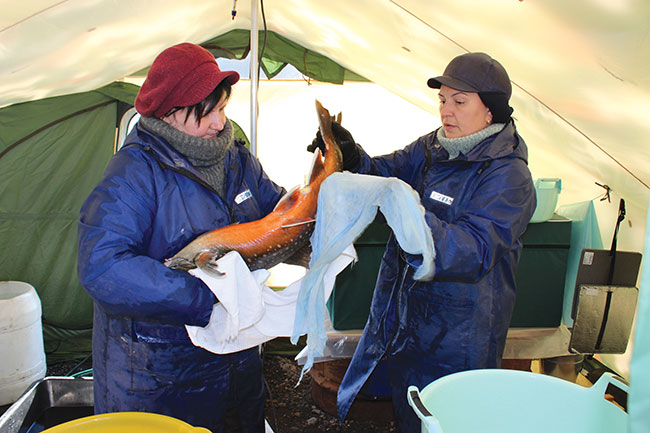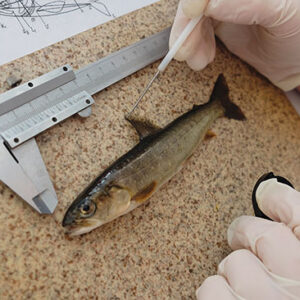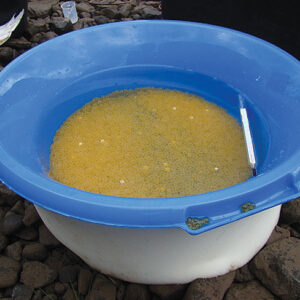
News & Views
Breeding
Genetics Week
Russian scientists begin breeding the world’s most nutritional fish
April 10, 2024 By Vlad Vorotnikov
 Russian scientists collect eggs of Putorana char Photos: Russia Arctic development agency
Russian scientists collect eggs of Putorana char Photos: Russia Arctic development agency A group of Russian scientists have delivered the first batch of Putorana char eggs to the Norilsk Hatchery in Siberia, making the first step towards establishing a breeding base for this fish.
Nearly 23,000 of Putorana char eggs have been collected by the scientists on the Lake Sobachye during the first expedition, supported by Arctic Development Project Office, a Russian government agency.
The expedition was kicked off shortly following a study conducted by the Siberian Branch of the Russian Academy of Sciences, which discovered that Putorana char contains record content of long-chain polyunsaturated fatty acids of the omega-3 family.
The scientists concluded that the Putorana char was the world’s most nutritious fish, offering more health benefits to consumers than any other fish species.
Putorana char is a rare fish found only at the Putorana plateau – a hard-to-reach area in the Putorana mountains deep in Siberia.
Based on the findings of several studies, Russian scientists have decided to establish a breeding base for Putorana char to encourage commercial farming. Larisa Glushchenko, associate professor at Siberian Federal University, who was heading the expedition, disclosed that it will take five to seven years before the scientists can start offering broodstock to farmers.
“Every year, the existing breeding base will be supplemented with new genetic material to make the fish population healthier,” Glushchenko said.
In the coming years, the scientists also plan to work on an optimal feed composition for Putorana char. During the first expedition, the scientists examined the bottom sediments of Sobacjie Lake and took samples of the muscle tissue of adult fish – to find out what the char eats in its natural habitat.
At least two more hatcheries in Siberia and the Russian Far East will participate in the project.
Print this page
Advertisement
- Feed for Thought: From carnivores to herbivores
- HIPRA releases manual for disease prevention in fish







